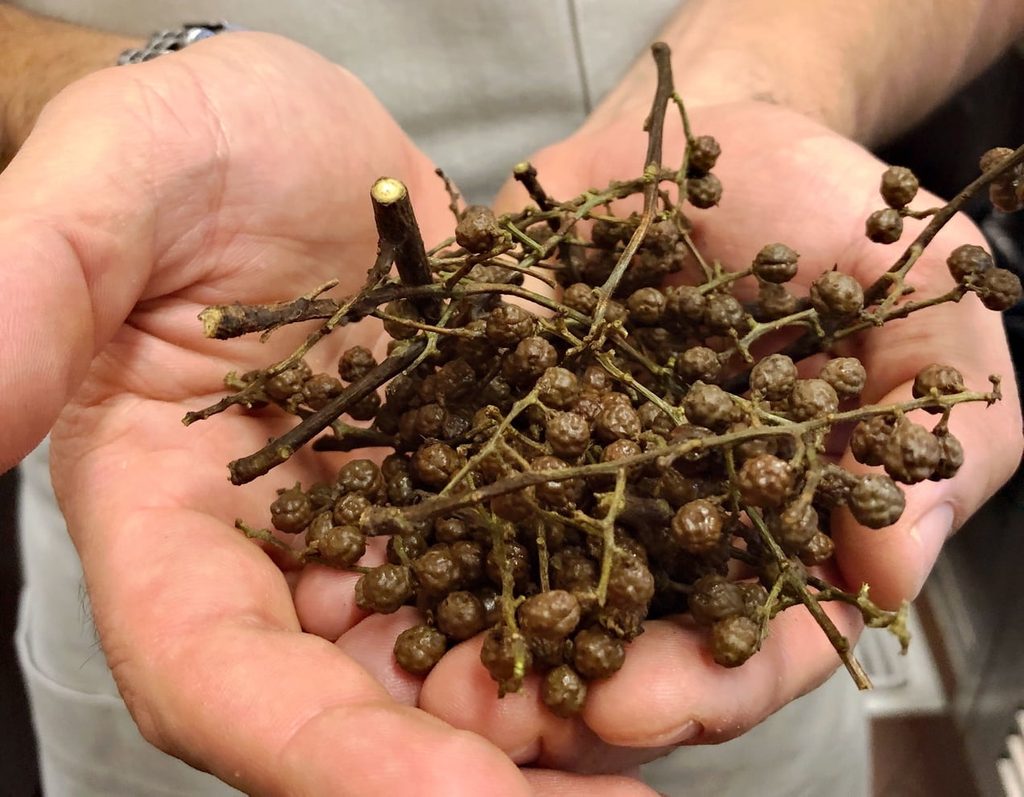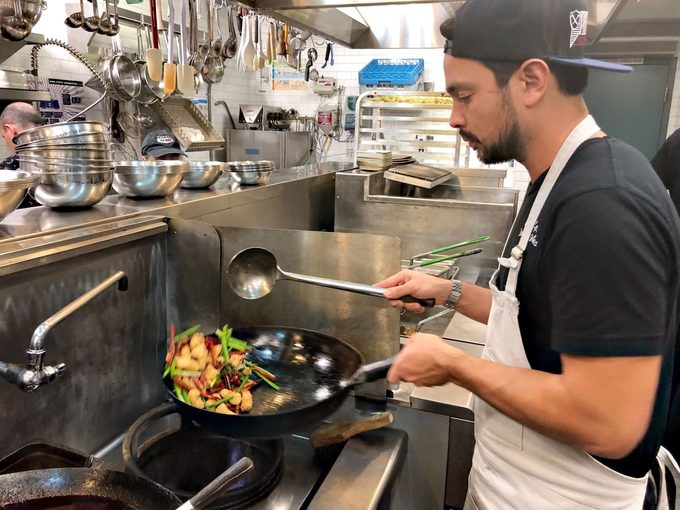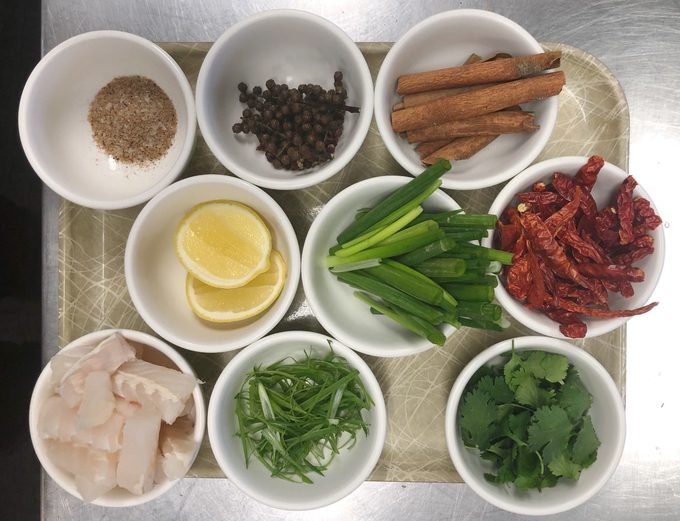Let’s Talk About the Addictive Nature of Sichuan Peppercorns
Updated: Feb. 20, 2019

You may have had Sichuan-style beef or chicken at your local Chinese restaurant, but they're nothing like the taste of fresh Sichuan peppercorns.
For those not familiar, the Sichuan peppercorn is commonly used in Chinese food, more specifically, in Sichuan cuisine. Unlike most peppers, Sichuan peppercorn’s characteristics aren’t hot or pungent. Instead, they elicit a spice sensation that’s akin to the carbonation in soda, with a tingly sensation, like touching your tongue to a nine-volt battery. Though I wouldn’t recommend actually doing so. And we have the 3% of a molecule called hydroxy-alpha sanshool within the peppercorns to thank for this dynamic feeling.
To get to the bottom of my obsession with Sichuan spice, I visited Chef Louis Tikaram, of EP & LP in Hollywood, California, who recently debuted a secret menu dish that featured actual fresh Sichuan peppercorns. This is significant because, according to him, finding fresh Sichuan peppercorns outside of China is quite rare.

“I went to Kong Thao’s farm in Fresno and I walked under this tree and got this crazy kind of waft. I was like, what is that? It was fresh Sichuan peppercorns and I look up and it’s just this huge tree. I always imagined [they] would be on almost like a vanilla vine, so perfect and delicate and powerful.”
Such a eureka moment sparked a fervor in Tikaram to take advantage of this opportunity, ultimately leading to a dish that utilized the concentrated power of fresh Sichuan peppercorns.
“So I took a big bag, rode it back to the restaurant and I started to cook. These fresh berries are so intense. The dry ones have been heat-treated, dried, and who knows when they’ve been harvested. Could’ve been years ago. Knowing how powerfully concentrated the peppercorns are fresh, I had to develop a dish where I could get that intensity but balance it so it has kind of that intoxicating aroma and you can still understand where the dish is coming from.”

The result is a beautifully fried fish cooked in vegetable oil that the fresh peppercorns were heated in quickly, which is a process that Tikaram referred to as “blooming.” What this does is flavor the oil with the peppercorns’ electric essence almost instantly, which he then uses to coat the fried fish.
Watching Chef Louis orchestrate his mastery of this dish had me salivating more than a pack of Pavlov’s hounds. When he slid the finished plate to me, I almost snatched it away, the longing for Sichuan spice getting the better of me. One bite and yes, there it was that familiar floral tinge. And it’s this very nature of spicy that has plenty other foodies flocking to Sichuan-style restaurants these days.
Stopping short of calling the rise of interest in Sichuan cuisine a trend, it is easy to say that the addictive nature of this spice is on the cusp of being bigger than what it is confined to. With chefs like Louis Tikaram coming across rarities like fresh Sichuan peppercorns, we’ll be seeing them in more and more regional style dishes soon enough, as opposed to the maroon hue of dried ones.